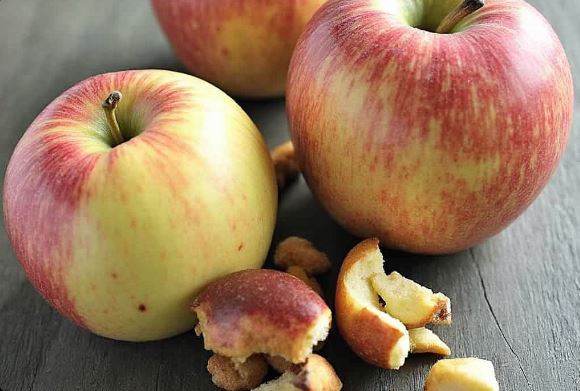
Jonagold apple trees, botanically classified as Malus domestica, are an American variety belonging to the Rosaceae family. Jonagold was developed at the New York State Agricultural Experiment Station in Geneva, New York, part of Cornell University. The breeding program aimed to combine the best traits of existing apple varieties. It is a cross between the Jonathan apple, known for its tart flavor and bright red color, and the Golden Delicious, famous for its sweet flavor and golden-yellow hue. This cross was made in 1943 by Dr. R.J. Green. Jonagold was introduced to the public in 1968.
In 1988, the cultivar was awarded the American Society for Horticultural Science Outstanding Fruit Cultivar Award. As of 2020, it was the most widely produced apple in Belgium, where it is used in Stella Cidre, and is credited with saving the European fruit industry. As of 2008, it was one of the fifteen most popular apple cultivars in the United States according to the US Apple Association.
Jonagold apples grow on semi-dwarf to dwarf trees, ranging from 3 to 5 meters in height, and are a triploid cultivar, meaning the variety has three sets of chromosomes instead of two. This genetic trait allows the trees to produce large fruits, depending on the growing environment.
They are generally large apples, fitting nicely into the palm of your hand, often considered good-sized for eating fresh. The shape of a Jonagold can be described as somewhat round to slightly conical, similar to its Golden Delicious parent but with the potential for some ribbing or slight irregularity like the Jonathan.
Jonagold apples have a base of yellow or green-yellow, which is overlaid with a blush of red or orange-red. This can sometimes cover much of the apple, giving it a mostly red appearance with yellow or green streaks or patches where the red doesn’t cover. The skin is smooth and can have a slight sheen or waxiness when polished.
Underneath the surface, the ivory-to-white flesh is crisp, aqueous, and dense with a crunchy, breaking quality. The flesh also encases a small central fibrous core filled with tiny black-brown seeds. The apples have a subtly sweet scent and a balanced blend of sugar and acidity, creating a mild, sweet, and tangy taste with floral, honeyed, and fruity nuances. Jonagold apples pair well with nuts such as pecans, walnuts, and almonds, vanilla, maple syrup, honey, brown sugar, and spices such as cinnamon, cloves, and nutmeg.
Cultivation of Jonagold Apples
Climate and Location
- Hardiness: Jonagold apples are hardy to USDA zones 4 through 8, which means they can tolerate a range of temperatures, but they thrive best in climates with cold winters to break dormancy and warm, but not excessively hot, summers.
- Chill Hours: They require a moderate amount of chill hours (about 500 to 1000 hours below 45°F or 7°C), making them suitable for many temperate regions.
Soil Requirements
- Type: Well-drained, loamy soil is ideal. Jonagold apples can tolerate a variety of soil types but prefer those with good fertility and drainage to prevent root diseases.
- pH: A soil pH of 6.0 to 7.0 is optimal. Adjustments might be necessary with lime or sulfur to achieve this range.
Planting
- Rootstock: The choice of rootstock determines the size of the tree. Dwarf or semi-dwarf rootstocks are popular for easier management and earlier fruiting.
- Spacing: Depending on the rootstock, spacing can vary. For standard trees, 20-30 feet apart; for dwarf or semi-dwarf, 12-18 feet is common.
- Planting Time: Plant in late winter to early spring or in the fall, ensuring the tree has time to establish roots before extreme weather conditions.
Care and Maintenance
- Watering: Regular watering is crucial, especially during the first few years and in dry spells. Deep watering encourages deep root growth.
- Mulching: Apply mulch around the base to retain moisture, reduce weed competition, and regulate soil temperature.
- Pruning: Prune annually to maintain shape, remove dead or diseased wood, and improve air circulation. Jonagolds benefit from a central leader system or modified leader system for structure.
Fertilization
- Nutrient Needs: Balanced fertilization is key. Use a fertilizer formulated for fruit trees, typically higher in nitrogen in early years for growth, then balanced for fruit production.
- Timing: Fertilize in early spring before growth starts, and possibly a lighter application after harvest.
Pollination
- Pollinators: Jonagold is not self-fertile, requiring cross-pollination. Good pollinators include Golden Delicious, Gala, or Fuji. Planting these nearby ensures good fruit set.
Pest and Disease Management
- Common Issues: Jonagold can be susceptible to apple scab, fire blight, and powdery mildew. Regular monitoring and integrated pest management (IPM) practices are essential.
- Protection: Use of appropriate fungicides, insecticides, or organic alternatives when necessary, and cultural practices like pruning for air flow can help manage diseases.
Harvesting
- Timing: Jonagold apples typically ripen in late September to early October, depending on the region. They should be picked when they show a good color change but before they become overripe, as they do not store as long as some other varieties.
- Storage: They store moderately well under controlled atmosphere conditions but are best consumed fresh or processed soon after harvest for peak flavor.